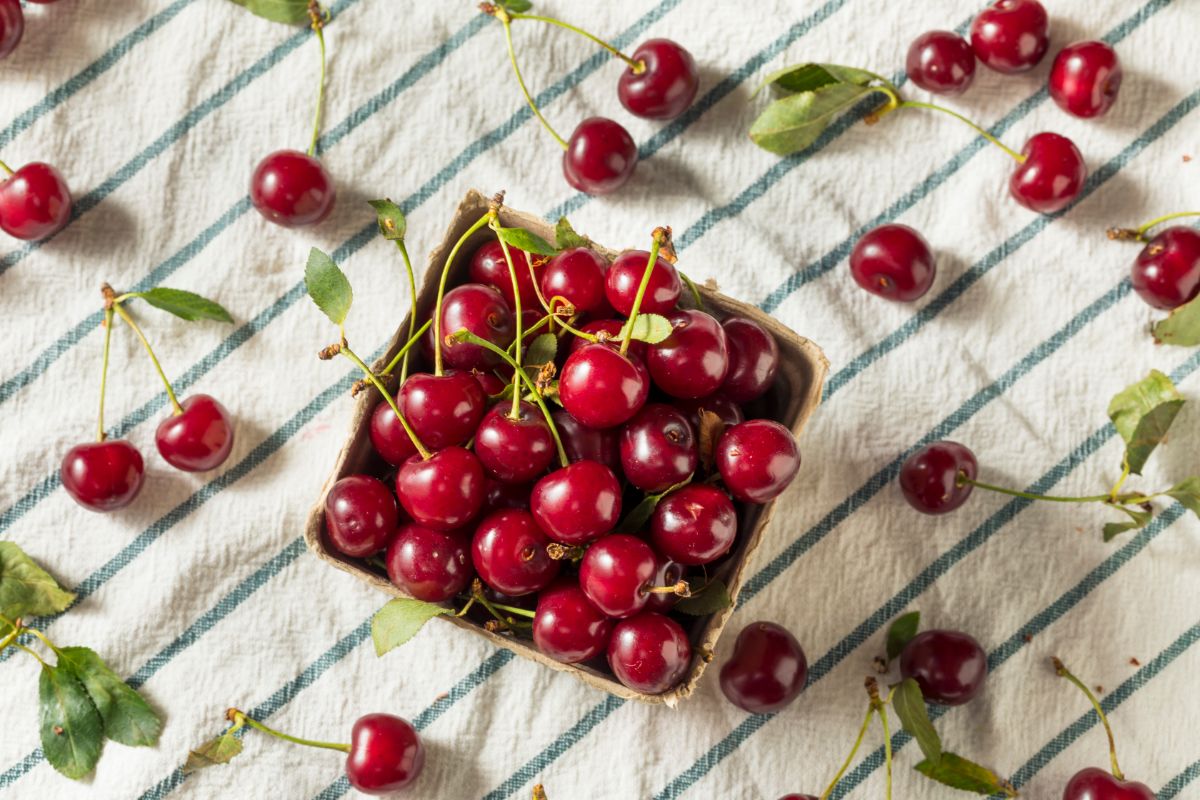Tart cherries can be canned in a water bath canner. Wash and pit the cherries and cook them in sugar syrup. Pack the cherries into canning jars and process them in a boiling water bath for 15-35 minutes.
Do You Have to Pit Cherries Before Canning?
No – pitting is up to personal preference. However, pitting makes eating canned tart cherries easier.
Pitting cherries is simple if you have a cherry pitter. If you don’t have this handy tool, place a metallic straw against the pit on the stem end and gently push it inwards to expel it from the cherry.
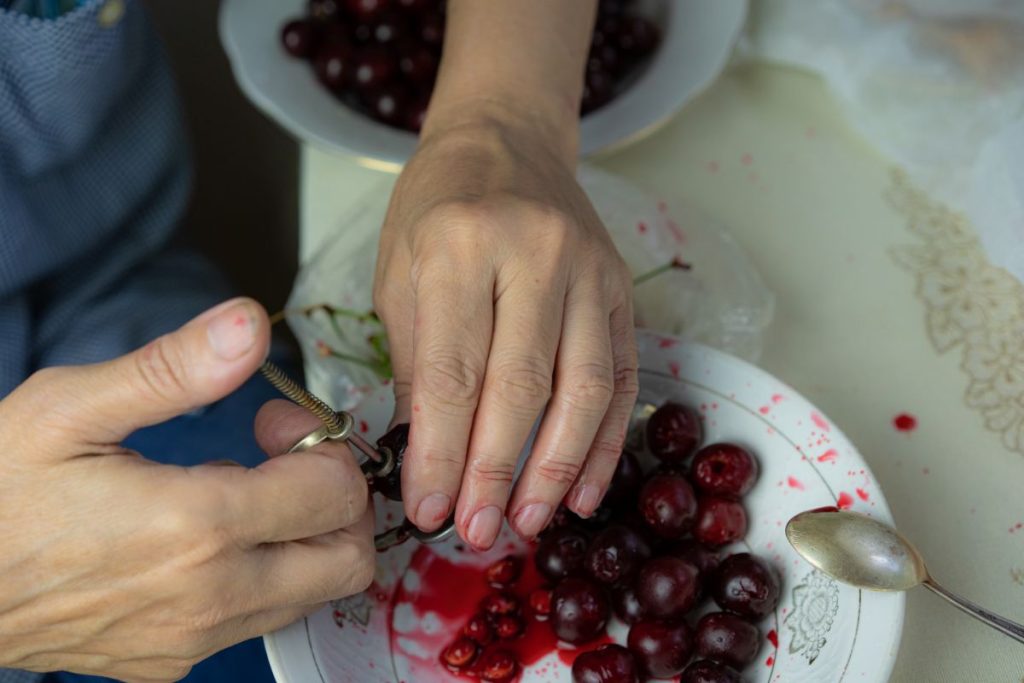
Should Cherries Be Water Bath Canned or Pressure Canned?
Tart cherries are best processed in a water bath. Tart cherries are highly acidic, and botulism spores can’t easily grow in such an environment once processed in a boiling water bath. While it’s also safe to pressure can cherries, the high temperatures may destroy their texture and flavor.
Print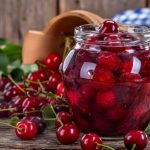
Tart Cherries Canning Recipe
- Total Time: 1 hour, 5 minutes
- Yield: 7 quarts 1x
Description
Is it your first time canning tart cherries? This recipe will help you effortlessly transform fresh tart cherries into a tasty, all-year-round ingredient.
Ingredients
- 17 ½ pounds of tart or sour cherries
- 7 ¾ cups water
- 5 ¼ cups sugar
Instructions
- Wash your canning equipment in hot, soapy water. Rinse well. Set lids aside to dry. Simmer canning jars in boiling water until ready to use.
- Fill a water bath canner half full of water and place it on your burner. Begin pre-warming the water using medium heat.
- Sort your tart cherries. Choose fresh, firm, mold-free, ripe, uniformly colored, sweet-tasting fruit.
- Remove the stems carefully. Wash the de-stemmed fresh cherries gently with cold water, rinse, and drain well in a colander.
- Dissolve 3g ascorbic acid in 1 gallon of water and stir well to make acidulated water.
- Using a cherry pitter, metallic straw, or your hands, pit the cherries (if desired). Add the pitted cherries to the acidulated water to prevent stem-end discoloration as you work.
- If you prefer your canned cherries unpitted, prick their skin with a sterile needle on the stem and bottom ends to prevent skin splitting during processing. Soak them in the acidulated water for at least 10 minutes.
- Prepare the canning syrup. Dissolve 5 ¼ cups of sugar in 7 ¾ cups of water to make heavy syrup for a 7-quart canner load. Other canning liquids may also be used, including water, cherry juice, apple juice, or white grape juice.
- Drain your fruits thoroughly from the ascorbic solution.
- For a hot pack, measure ½ a cup of your preferred canning liquid per quart of cherries and bring the mixture to a boil in a large pot. Once the fruits are warmed through, ladle the hot cherries into hot jars. Top up the jars with hot syrup, juice, or water, leaving ½ inch headspace.
- For a cold pack, add ½ cup canning liquid per jar, and add raw drained cherries while shaking gently to enhance a tight pack. Cover with more hot liquid, leaving ½ inch of headspace.
- Remove air bubbles using a bubble popper, clean plastic knife, or spatula.
- Wipe the jar rims with a damp cloth or paper napkin.
- Place your 2-piece canning lids on the jars and adjust to fingertip tightness.
- Load the pint or quart jars into the boiling water canner, setting them on the canning rack inside using a jar lifter. Bring the water to a rolling boil using medium-high heat and cover the canner with a lid.
- Set your timer to 15-25 minutes for pint jars or 20-35 minutes if using quart jars, adjusting the time per elevation:
Water Bath Canner Processing
- 0 – 1000ft: 15 minutes for pints; 20 minutes for quarts
- 1,001 – 3,000ft: 20 minutes for pints; 25 minutes for quarts
- 3,001 – 6,000ft: 20 minutes for pints; 30 minutes for quarts
- 6,001ft and up: 25 minutes for pints; 35 minutes for quarts
Post Processing
- Once the recommended time lapses, turn off the heat. Let the jars sit in the hot water for 5 minutes.
- After 5 minutes, remove the jars from the water using a jar lifter and place them on a towel-covered countertop to cool 1 inch apart for 12-24 hours.
- Once they have cooled, check the seals. Sealed lids curve downwards and display a concave shape. They do not flex when pressed. For any unsealed jars, reprocess with new lids immediately or place jars in the refrigerator and use within five days.
- For sealed jars, remove the screw bands and wipe the jars clean. Write the canning date and contents on each jar.
- Store them in a cool, dry, dark place away from direct sunlight and humidity.
- Prep Time: 30 minutes
- Canning Time: 20 minutes
- Cook Time: 15 minutes
Nutrition
- Serving Size: 1 cup
- Calories: 92kcal
- Sugar: 19g
- Sodium: 0mg
- Fat: 0.3g
- Saturated Fat: 0.1g
- Carbohydrates: 23g
- Fiber: 3.1g
- Protein: 1.5g
- Cholesterol: 0mg
How Long Do You Water Bath Can Cherries?
Water bath canning cherries take between 15-25 minutes for pint jars and 20-35 minutes for quarts. If using the raw pack method, the processing time for cherries is 25-40 minutes for pints and quarts.
How Long Do You Pressure Can Cherries?
It is possible to process cherries in a pressure canner safely. The time depends on the jar size you’re using and your altitude above sea level.
Processing time for tart cherries in dial-gauge pressure canners:
| Altitude (ft) | 0 – 2,000 | 2,001 – 4,000 | 4,001 – 6,000 | 6,001 – 8,000 |
| Hot-pack pints (8 minutes) | 6 lbs | 7 lbs | 8 lbs | 9 lbs |
| Hot-pack quarts (10 minutes) | 6 lbs | 7 lbs | 8 lbs | 9 lbs |
| Raw-pack pints/quarts (10 minutes) | 6 lbs | 7 lbs | 8 lbs | 9 lbs |
Processing time for tart cherries in weighted-gauge pressure canners:
| Altitude (ft) | 0 – 1,000ft | 1,001ft + |
| Hot-pack pints (8 minutes) | 5 lbs | 10 lbs |
| Hot-pack quarts (10 minutes) | 5 lbs | 10 lbs |
| Raw-pack pints/quarts (10 minutes) | 5 lbs | 10 lbs |
Do You Have to Can Cherries in Syrup?
No – while syrup is popular for canning fruit, you may also use canning liquids such as boiling apple juice or white grape juice. You may also can cherries in their own juice. While water is also a recommended liquid, it may water down your fruit’s color and flavor, unlike juice.
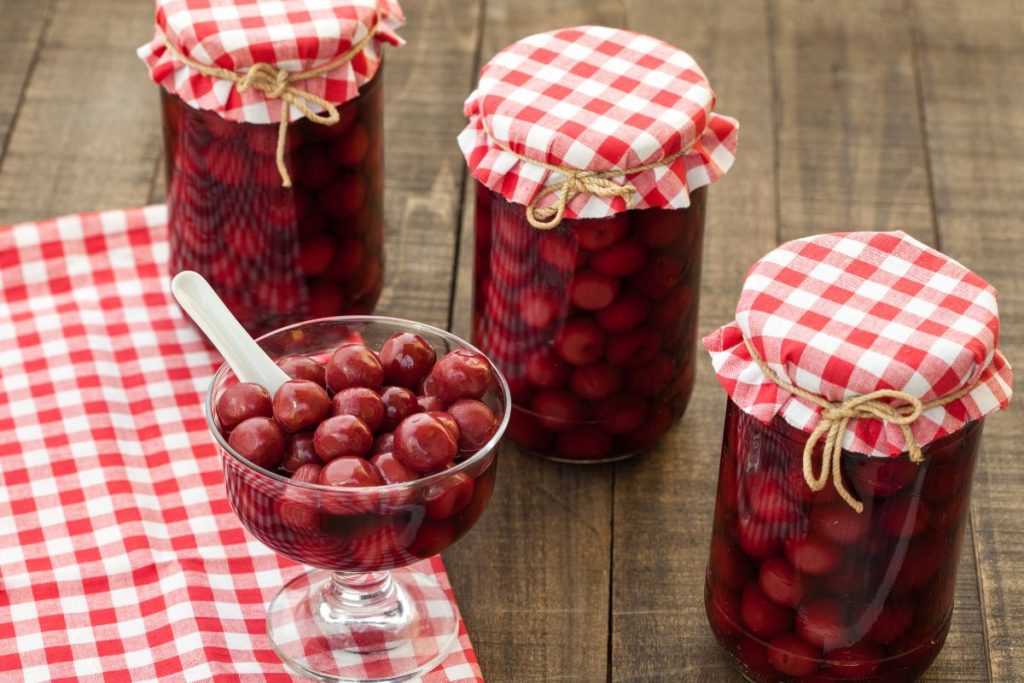
What Type of Jar is Used to Can Cherries?
Wide-mouth quart and pint canning jars are the best for processing tart cherries. These sizes fit most standard boiling water or pressure canners and are convenient when packing fruits. Half-pints can also be used if smaller amounts are preferred, as they require the same processing time as pints.
Can You Can Sweet Cherries?
Yes – sweet cherries are excellent for canning. These tasty fruits have sufficient acidity making them safe for water bath canning. They can also be processed in a pressure canner.
What is the Difference Between Sweet and Sour Cherries?
Sweet cherries and sour cherries are different in the following aspects:
- Color: Sweet cherries have a deep, dark red, almost purplish when fully ripe, while sour cherry has a vibrant red hue.
- Size: Sweet cherries are larger than their sour cousins.
- Taste: As the name suggests, sweet cherries are sweeter, thanks to their natural sugar content.
- Texture: Sweet cherries are firm-fleshed even when ripe and feel tough when biting. Sour cherries have a softer, delicate texture.
- Uses: Sweet cherries are commonly eaten fresh or used in fruit dishes and plated desserts. Tart cherries are preferred in cooking, baking, and making festive drinks due to their tartness.
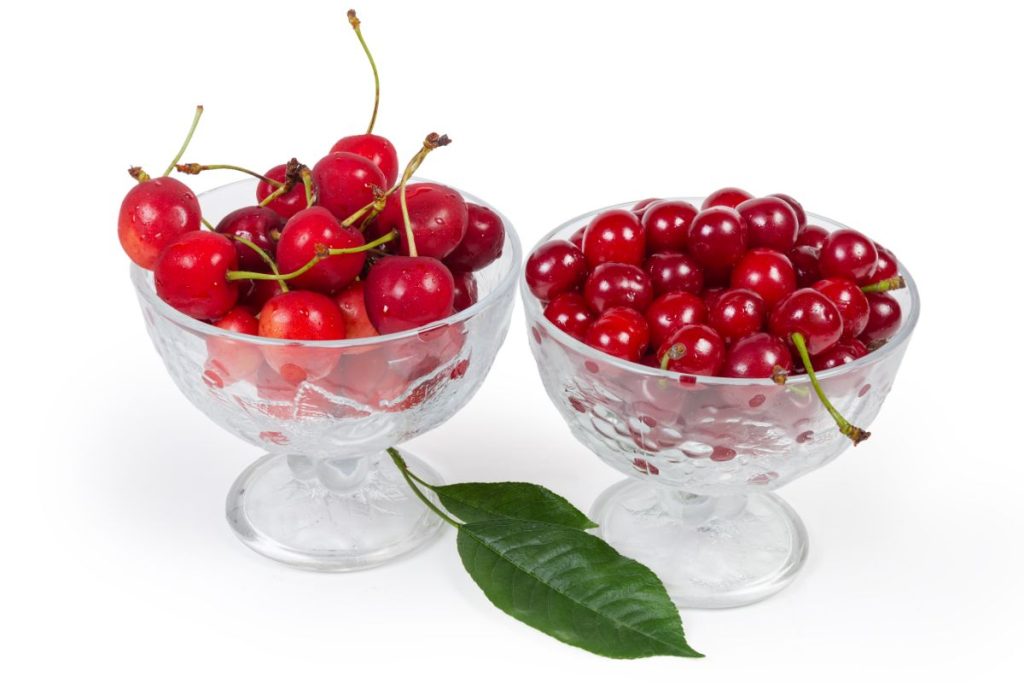
What Are the Advantages of Canning Cherries?
- Convenience. Having canned tart cherries on hand eliminates trips to the grocery store.
- Cost-effective. Home canning cherries is an economical way of saving your summer harvest or preserving bulk cherry sales from the farmer’s market for future use.
- Longer shelf life. Canned cherries have a shelf life of 18 months, better than other methods of food preservation.
- Nutritional benefits: A study linked the high antioxidant content in cherries to reduced cases of oxidative stress and inflammation in patients. Tart cherries also are rich in vitamin A, magnesium, manganese, copper, potassium, and iron.
- Versatility. Canned sour cherries are a flavorful addition to cherry pie filling, muffins, oatmeal, cereal, cherry crumbles, and crisps.
How to Store Canned Cherries
Store canned cherries below 75°F and away from the fluctuating temperatures of hot pipes, furnaces, and uninsulated attics. Keep the storage location moisture-free to prevent rusting of metallic lids.
How Long Do Canned Cherries Last?
With proper storage, canned cherries can last between 12-18 months. However, the USDA recommends that all home canned goods be consumed within one year for the best quality. Refrigerate any unopened jars of canned cherries and enjoy the contents within 5-7 days.

